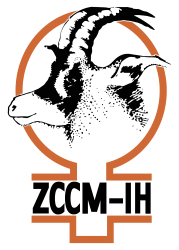KONKOLA Copper Mine Plc has written to its workers at Nchanga, informing them that the Chingola-based underground mine will be put on care and maintenance with immediate effect.
According to a letter addressed to the employees, KCM stated as follows: “This information must be communicated to all staff by Friday 31st July 2015. This includes: all KCM employees and contractors. KCM Plc has been informed by Copperbelt Energy Corporation (CEC) that electricity power supply will be reduced by up to 30 per cent. As a result of the power reduction, KCM has decided as follows: To place Nchanga underground operations on care and maintenance, scale down on the Nkana refinery operations. The above measures are with immediate effect until further notice,” read the notice letter in part.
And Kitwe-based Anglican priest Fr Richard Luonde said his friends who work at Nchanga mine had called him to complain about KCM’s decision.
“I have this letter here, someone just called me and said, ‘Ba Father Luonde, please help us advise this government. Very shortly, there will be mayhem in Nchanga. Bytomorrow morning, it will be disaster’,” Fr Luonde said.
“What this means is that when they put this on maintenance, there are close to 3,000 workers at Nchanga underground who will be declared redundant. People will lose jobs and their families will suffer.”
He said it was clear that KCM was using power cuts as reason to shut down its operations at Nchanga when it has always been wanting to reduce its workforce.
“This KCM has always been wanting to reduce its labour force and they are now using the Zesco load-shedding to get rid of workers. But when they get rid of these 3,000 employees, they will be getting rid of over 20,000 people because these workers have families,” said Fr Luonde.
And sources within senior KCM management revealed that Vedanta Resources, the owners of the mine, had refused to invest in the Nchanga underground mine and management had no option but to close.
“We are folding, yes… we saw this coming because the owners of KCM, Anil Argawal and his friends, have refused to invest in underground operations at Nchanga. We told them at several internal meeting that this is a terrible mistake but they are not ready to do that,’’ sources said.
“The technical aspect of this issue is that Nchanga underground is an old mine as you know; it’s very deep now, and in mining, the deeper you go, the more costly mining becomes. But this is a manageable situation by the investor because we still have a rich copper ore body underground. This issue of saying it’s because of power cuts is just an excuse they want to put up.”
The sources said news of the mine shutting down operations had created serious apprehension among workers and the labour movement.
“As we speak, the president of the Zambia Congress of Trade Unions Nkole Chishimba is on his way to KCM. Other union officials are here and they have told us in our faces that they will not accept this; they have challenged KCM and the government, which has a stake in KCM, to invest in the mine and maintain these jobs,” the source said.
Mineworkers Union of Zambia general secretary Joseph Chewe said the union would issue a statement after receiving official communication.
“We have received those reports but we are waiting for official communication. We are making frantic efforts to get the details as we speak. We will give you details later together with our position on this matter,” said Chewe.
And National Union of Miners and Allied Workers general secretary Steven Mukupa said the union had also gotten the report and it would be unfortunate if KCM decided to take a drastic measure without involving stakeholders.
“I am just waiting for an email over this but we have heard the reports. What we want is official communication. They (KCM) should have alerted us, this is a serious matter. It is extremely unfortunate if that’s what they have done. We will give you our comprehensive statement later,” said Mukupa.


